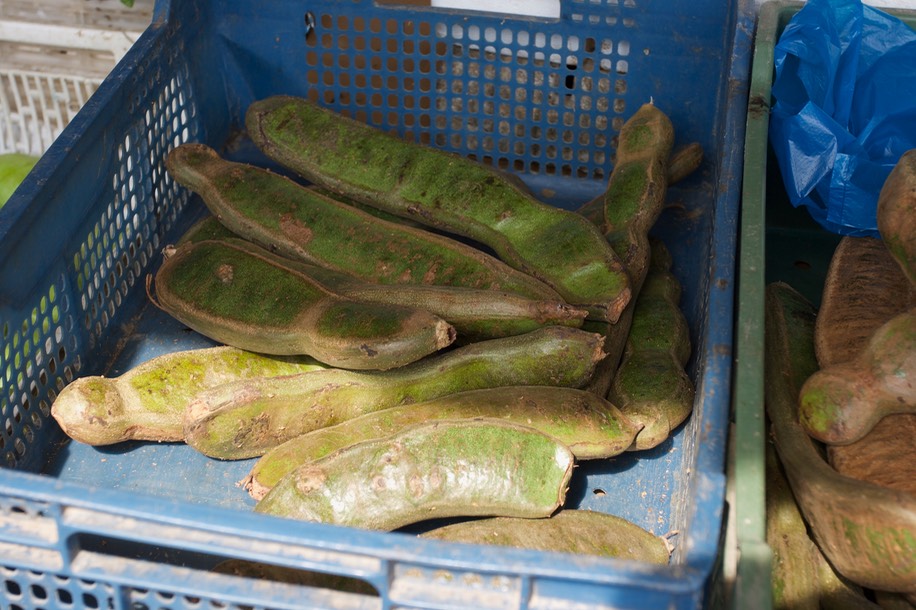
Guaba, Inga sp., is a legume. Its other common names allude to its appeal; joaquiniquil, cuaniquil, guama, and ice cream-bean. Inside the casing there are masses of white surrounding beans. The white pulp is sweet and smooth, very nice - something like Jack Fruit.
Guaba is native to South America and is a food stuff whereever it is grown.
Guaba has a symbiotic relationship with ants of the genus Pheidoles. As with the better known relationship between Acacia and ants the plant produces a nectar which is eaten by the ants. In turn, the ants protect “their turf” from all beasts that would eat the plant (except there are some catepillars [Riodinid] which produce honeydew for the ants in exchange for being allowed to eat the plant - imagine “corrupt ants”).
The seeds contain toxins (trypsin and chymotrypsin) which are said to be neutralized during cooking. When cooked the beans are high in nutrients. The seeds (called arils) are also used to make an alcoholic drink called cachiri, in Colombia - the making of the drinking involves chewing the beans and spiting the result into a fermentation tank.